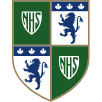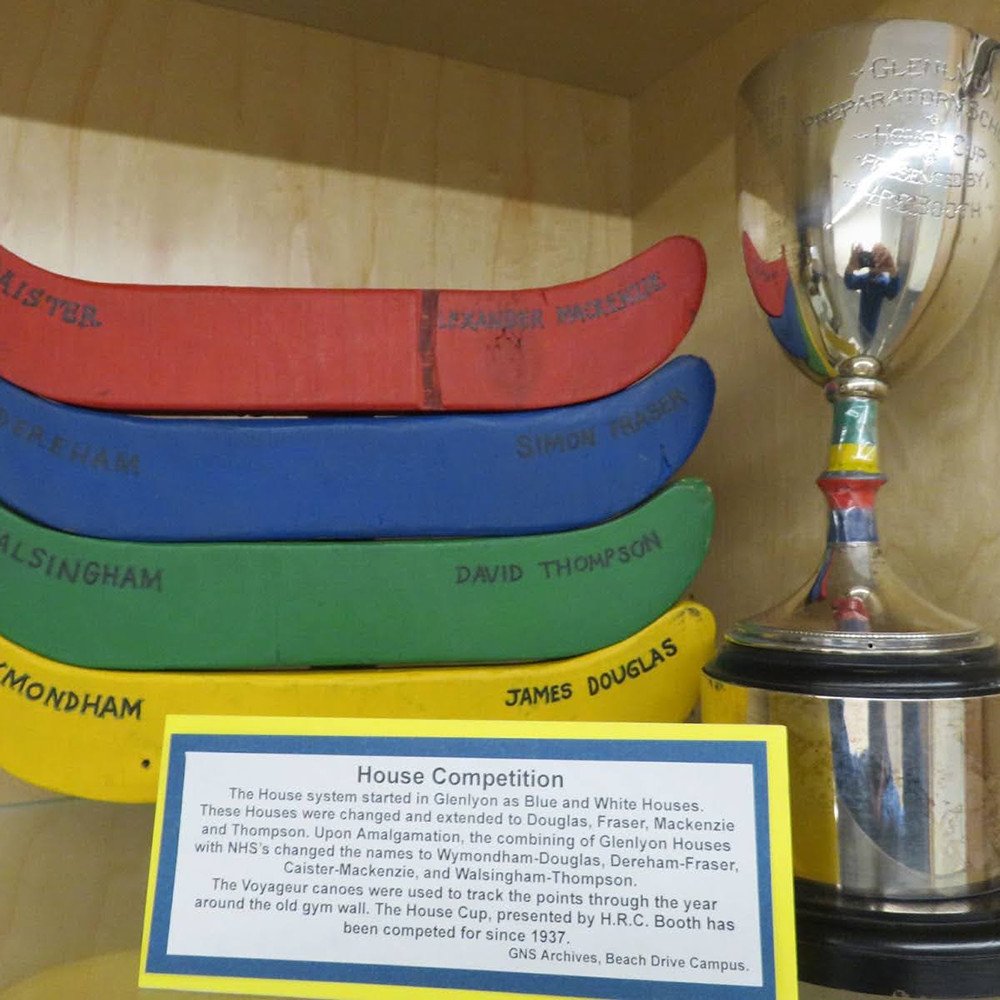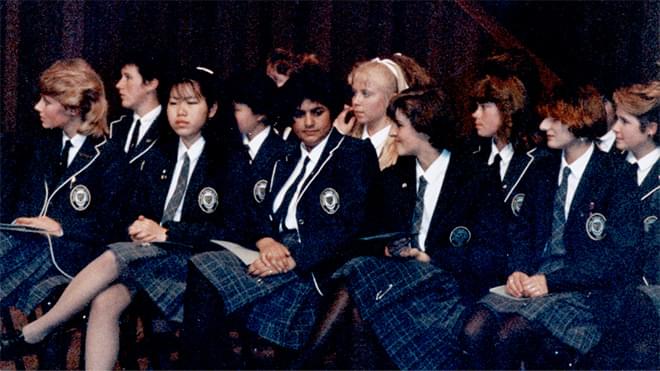The roots of our House system were introduced into the founding schools, Norfolk House and Glenlyon, early in their development. The practice was originally started in schools in England, recognising with chosen names the houses used for boarding or important school personalities.. Each student was allocated to one house at the time of enrollment, providing connection and identity with a House for the opportunity to compete against other Houses in sports and other ways and providing a focus for group loyalty.
For Norfolk House, it was not until the gymnasium was completed next to Main at the Pemberton Woods Campus in 1933, that House competition got underway. The students were divided into three Houses: Caister(red), Walsingham(purple) and Wymondham(yellow) – understandably given the connection to both Norfolk and the names of towns close to where both McDermott and Atkins started their teaching careers.. Dereham(blue) was not introduced until 1965. Each house elected a House Captain. Part of their responsibilities was to keep a House diary and provide unique banners (see above) to help the cheerleading activities. The Challenge Cup for the Top House was first awarded at the end of the 1934-35 school year.

At Glenlyon, Major Simpson adopted the house system to provide every student with a sense of belonging in a house group and to be involved in competitive activity. Simpson established two houses – Blue and White – and moved students around every September to better create two equally ‘competitive’ groups. Initially, there was no House Cup and academics and behavior were not considered in the points scoring.
In 1944, the Booth family presented the first House Cup for Glenlyon at the end of the 1943-44 school year and it is still awarded at the Junior School (see above).
In the early 1960’s, with the increase in enrolment, it became necessary to increase the Houses at Glenlyon to firstly three and shortly afterwards four. These new Houses were renamed Fraser(blue), Mackenzie(red), and Thompson(green), while Douglas(yellow) was added as the fourth one a year later. All were important men in ‘opening up’ Canada’s frontiers.
Upon amalgamation of the two schools in 1986, the House names of the founding schools needed adjustment. This was simply resolved by combining them – Wymondham-Douglas(yellow), Walsingham-Thompson(green), Dereham-Fraser(blue), Caister-Mackenzie(red). Walsingham, previously purple because green was already a major part of Norfolk House School colours, now became green.

Every Campus operated their House ‘competitions’ on a point system that included one or more of the following recorded aspects of school life: inter-house activities, academic effort and achievement, behavior and service.
Even though some great fun activities were introduced(see above), over time enthusiasm waned, as students moved out of the Junior Schools. On the senior campus, the House Spirit awards and Pooley Cup, which had become the House Cup, were ‘retired’.
As time went on, there was a gradual distancing from academics, effort and ‘traditional’ House competition, like track & field and swimming. Now, each Campus operates House ‘activities’ differently, as is their want, reflecting their own needs, beliefs and desires for participation.
The question is “Does House activity have any future value on each campus and should it be continued, revised in some way, or ended?”





